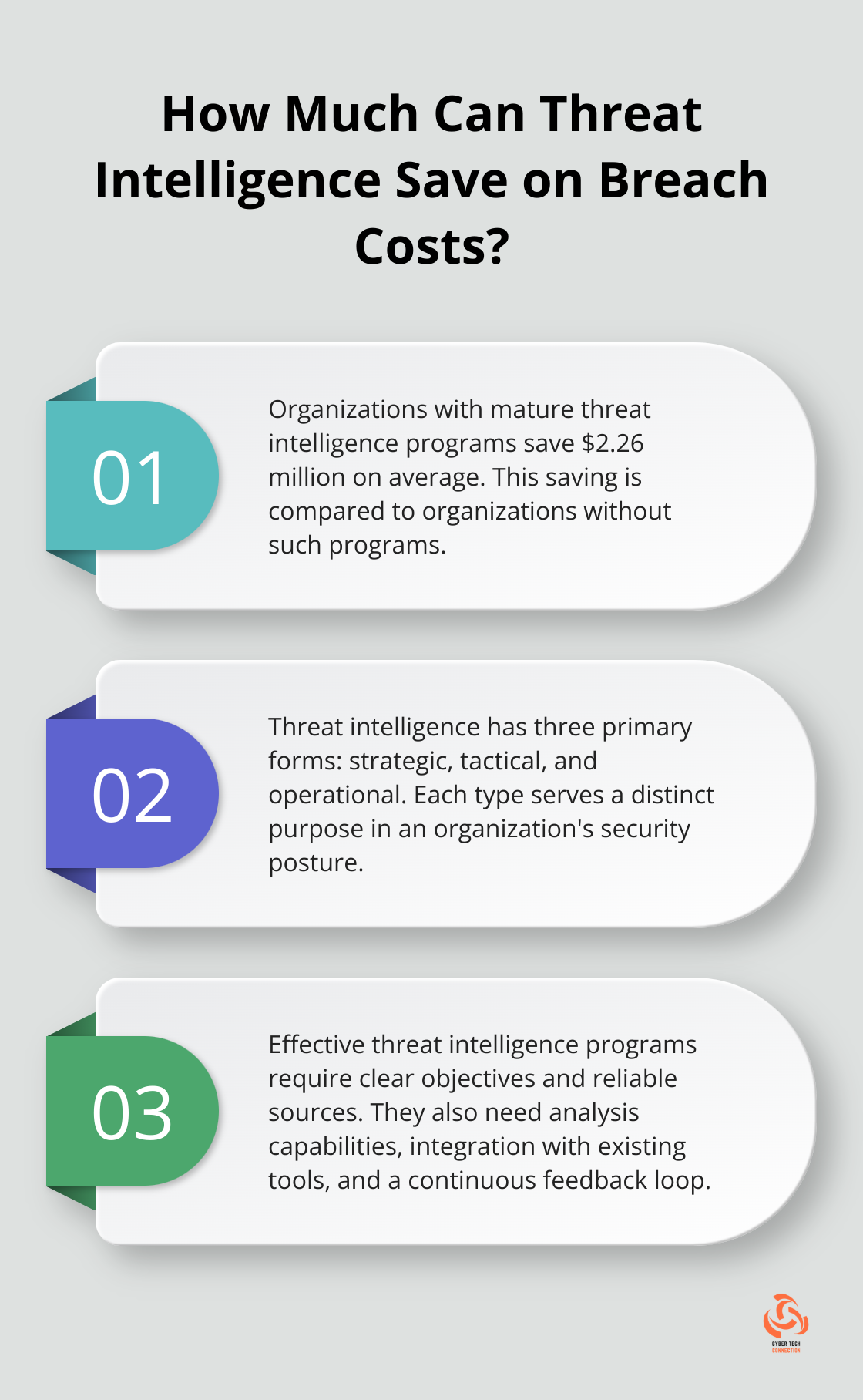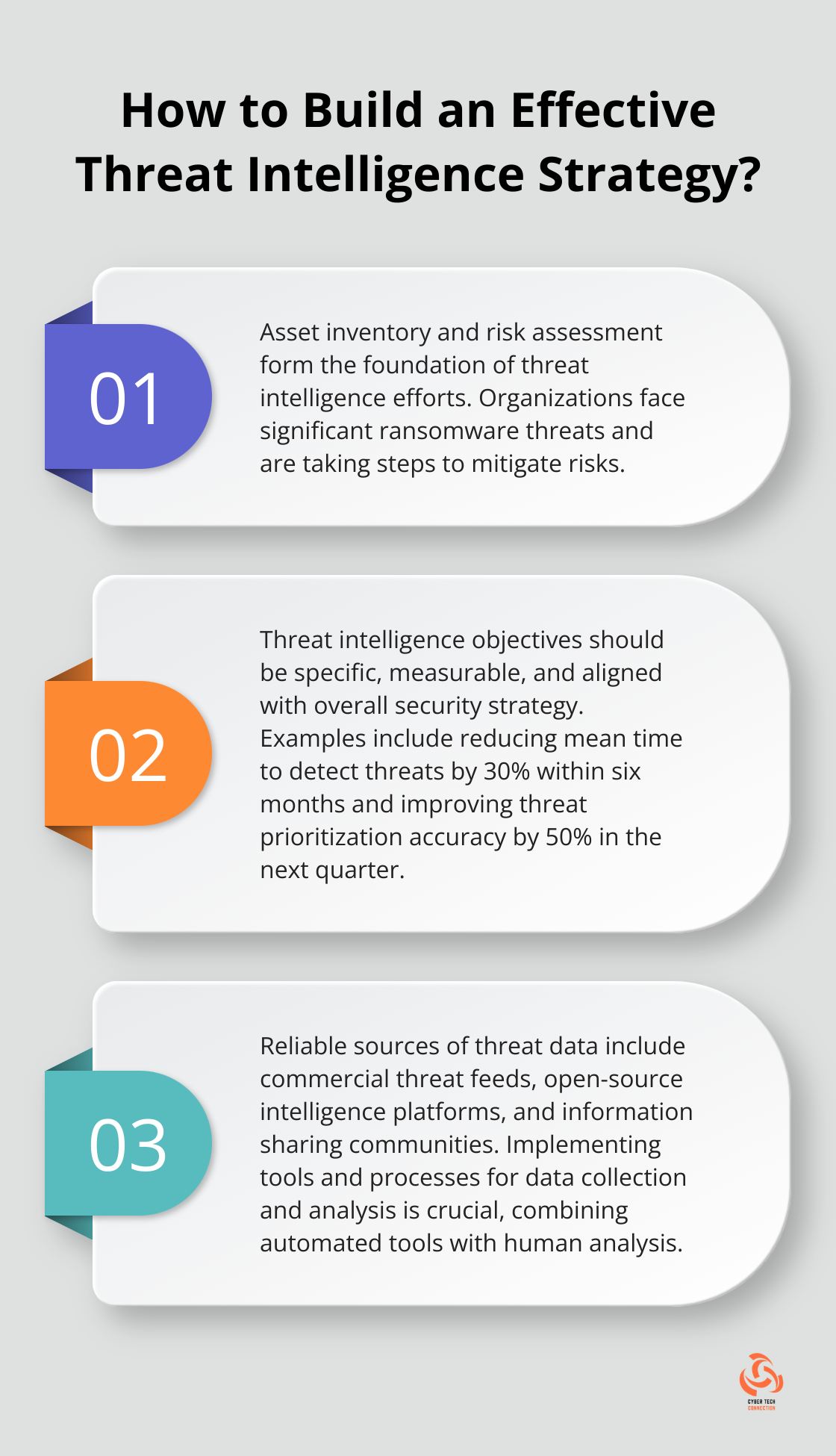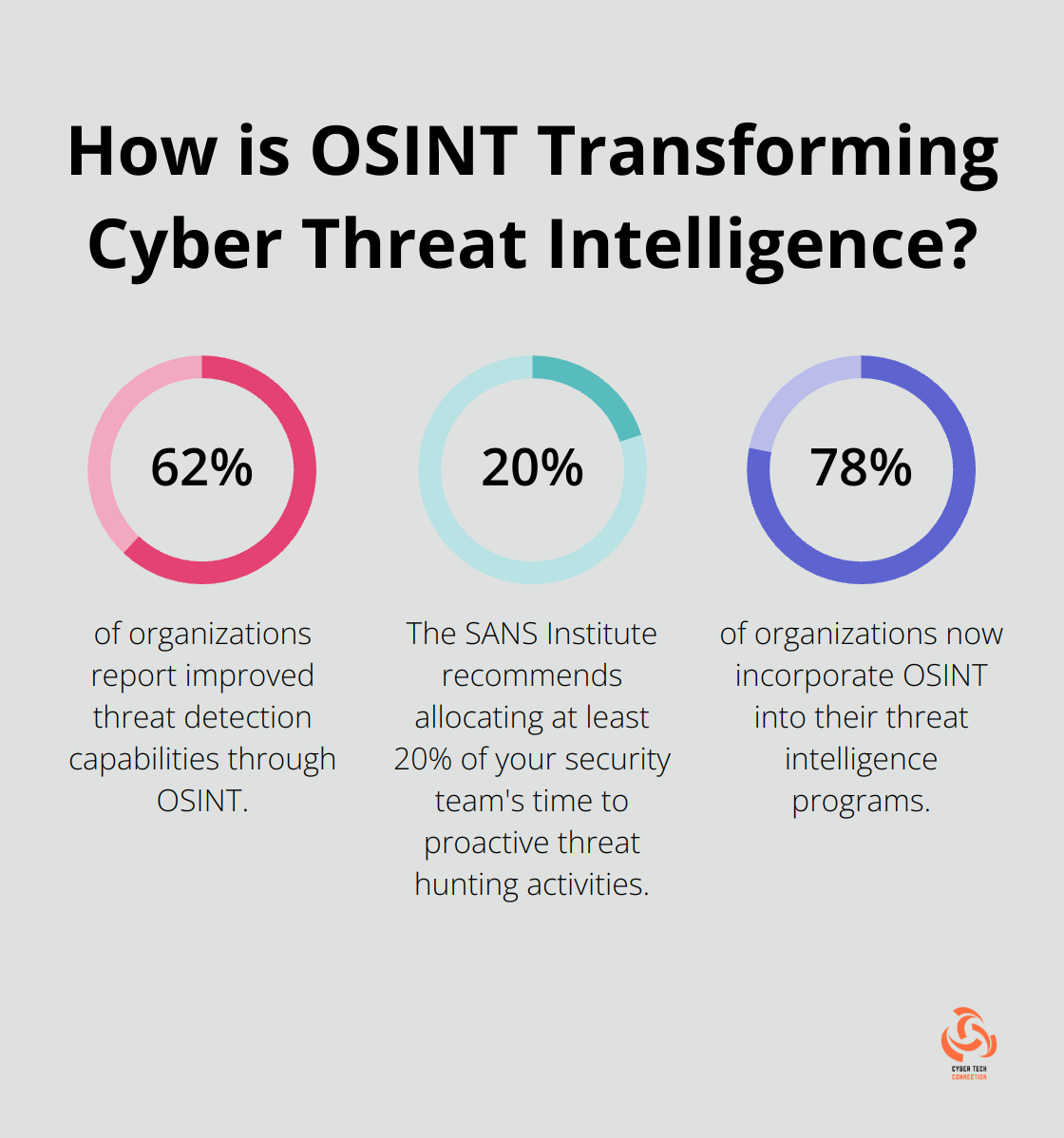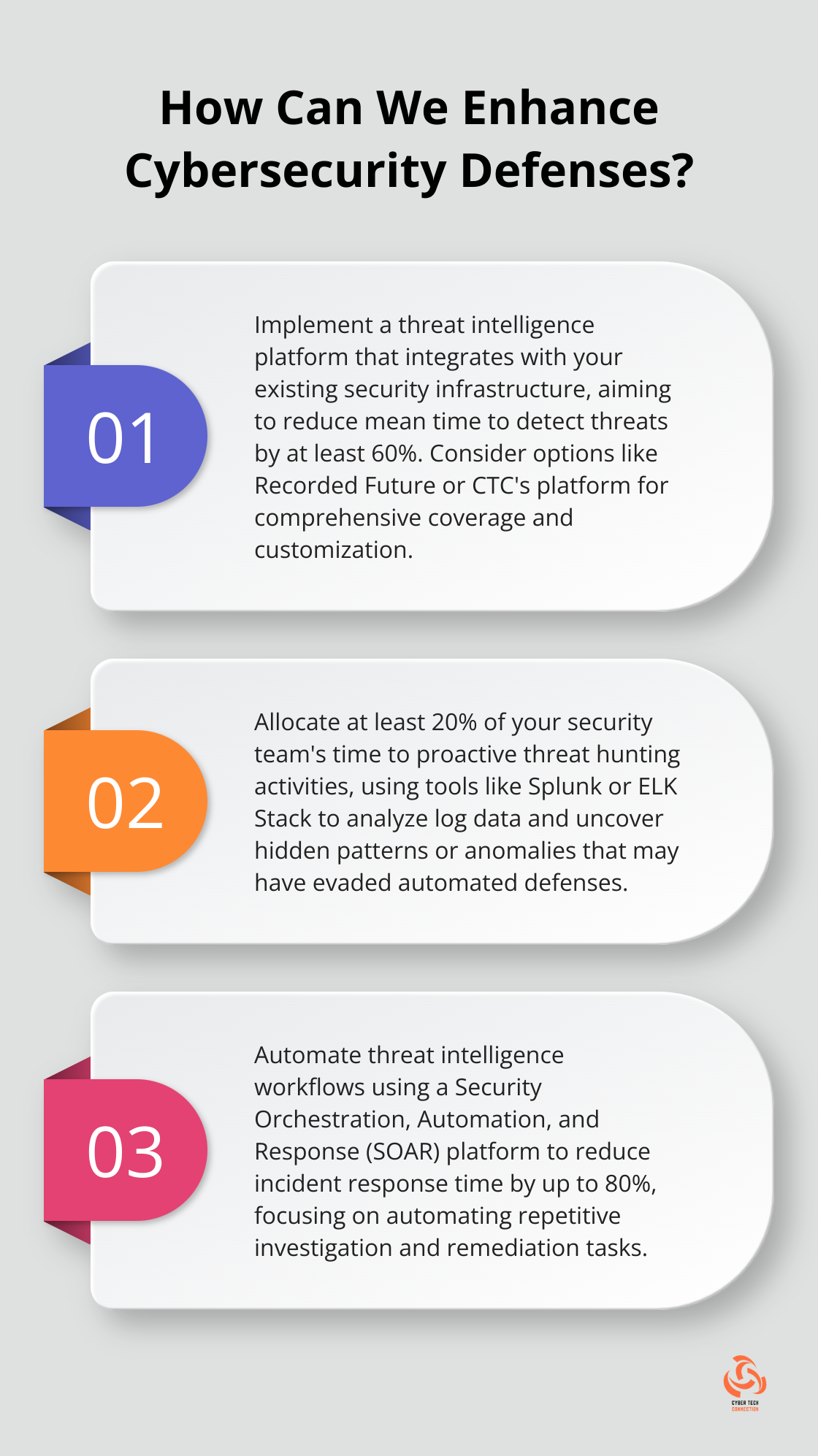Organizations face an ever-evolving array of cyber threats. At CTC, we understand that a well-crafted threat intelligence strategy is essential for staying ahead of potential attacks.
This blog post will guide you through the process of developing and implementing an effective threat intelligence strategy, helping you protect your assets and strengthen your overall security posture.
What is Threat Intelligence?
The Foundation of Modern Cybersecurity
Threat intelligence forms the backbone of modern cybersecurity. It involves the collection, analysis, and application of information about potential or current attacks that threaten an organization. However, it extends beyond mere data gathering; threat intelligence transforms raw data into actionable insights that protect businesses.
Embracing Proactive Defense
The essence of threat intelligence lies in its proactive nature. Instead of reacting to attacks after they occur, organizations can anticipate and prepare for potential threats before they materialize. This forward-thinking approach significantly reduces the risk of successful attacks and minimizes their impact when they do happen.

A report by the Ponemon Institute highlights the financial benefits of this approach: organizations with mature threat intelligence programs save an average of $2.26 million in breach costs compared to those without such programs. This stark difference underscores the critical role of effective threat intelligence in modern cybersecurity strategies.
Three Pillars of Threat Intelligence
Threat intelligence manifests in three primary forms: strategic, tactical, and operational. Each type serves a distinct purpose and informs different aspects of an organization’s security posture.
- Strategic Threat Intelligence: This provides a high-level view of the threat landscape, focusing on broad trends, emerging threats, and the motivations of threat actors. C-suite executives and board members find this intelligence particularly valuable for making informed decisions about long-term security strategies and resource allocation.
- Tactical Threat Intelligence: More immediate and specific, tactical intelligence deals with the tactics, techniques, and procedures (TTPs) used by threat actors. Security teams rely on this information to understand how attacks are likely to unfold and how to defend against them.
- Operational Threat Intelligence: The most granular and time-sensitive form, operational intelligence includes specific indicators of compromise (IoCs) such as malicious IP addresses, file hashes, and domain names. Security operations centers (SOCs) use this type of intelligence to detect and respond to threats in real-time.
Constructing an Effective Threat Intelligence Program
An effective threat intelligence program requires careful planning, appropriate tools, and a commitment to continuous improvement. Key components include:
- Clear Objectives: Your program should have well-defined goals that align with your organization’s overall security strategy.
- Reliable Sources: High-quality intelligence depends on trustworthy sources (commercial threat feeds, open-source intelligence, information sharing communities).
- Analysis Capabilities: You need skilled analysts and robust tools to convert raw data into actionable insights.
- Integration: Threat intelligence should seamlessly integrate with existing security tools and processes (SIEM, firewall, endpoint protection platform).
- Feedback Loop: Your program should continuously evolve based on its performance and changing threats.
As we move forward, it’s important to understand how to develop a robust threat intelligence strategy that leverages these components effectively. The next section will explore the steps involved in crafting such a strategy, ensuring your organization stays ahead of potential threats.
Building Your Threat Intelligence Arsenal
Know Your Crown Jewels
The first step in crafting an effective strategy is to identify your organization’s most valuable assets and potential vulnerabilities. This process, often called asset inventory and risk assessment, forms the foundation of your threat intelligence efforts.

Start by cataloging all your critical assets, including data, systems, and infrastructure. Then, assess the potential impact if these assets were compromised. A study reveals that organizations face significant ransomware threats and are taking steps to mitigate risks and their potential impact.
Once you’ve identified your crown jewels, conduct a thorough vulnerability assessment. This will help you understand where your weak points are and which threats pose the greatest risk to your organization.
Set Your North Star
With a clear understanding of your assets and vulnerabilities, it’s time to define your threat intelligence objectives. These goals should be specific, measurable, and aligned with your overall security strategy.
For example, your objectives might include:
- Reduce the mean time to detect (MTTD) threats by 30% within six months
- Improve the accuracy of threat prioritization by 50% in the next quarter
- Enhance the organization’s ability to anticipate and prevent targeted attacks
These objectives should be revisited and adjusted regularly as your threat landscape evolves.
Build Your Intelligence Machine
Now that you have clear objectives, it’s time to establish processes for data collection and analysis. This is where the rubber meets the road in threat intelligence.
Start by identifying reliable sources of threat data. These might include commercial threat feeds, open-source intelligence (OSINT) platforms, and information sharing communities like ISACs (Information Sharing and Analysis Centers).
Next, implement tools and processes to collect, normalize, and analyze this data. Cybersecurity metrics are key to tracking and measuring security effectiveness in 2025.
We recommend using a combination of automated tools and human analysis. While AI and machine learning can process vast amounts of data quickly, human analysts bring critical context and intuition to the process.
Integrate and Operationalize
The final step is to integrate your threat intelligence into your existing security operations. This ensures that the insights you’ve gained translate into concrete actions that improve your security posture.
Start by integrating your threat intelligence platform with your other security tools, such as your SIEM, firewall, and endpoint protection platform. This allows for automated correlation of threats with your internal data, enabling faster detection and response.
Next, establish clear processes for how threat intelligence will be used in your day-to-day operations. This might include:
- Automated blocking of known malicious indicators
- Prioritization of alerts based on threat intelligence
- Regular threat hunting exercises guided by the latest intelligence
As we move forward, it’s essential to understand that developing a robust threat intelligence strategy is an ongoing process. The next section will explore the tools and techniques that can help you implement and maintain an effective threat intelligence program.
Implementing Effective Threat Intelligence Tools and Techniques
Selecting the Right Threat Intelligence Platform
The selection of an appropriate threat intelligence platform forms the foundation of your strategy. Platforms should offer real-time threat data, customizable dashboards, and integration capabilities with existing security infrastructure. A recent Gartner report indicates that organizations using integrated threat intelligence platforms reduce their mean time to detect (MTTD) threats by an average of 60%.

Key factors to consider when evaluating platforms include data quality, coverage of industry-relevant threat types, and user-friendliness. The Recorded Future Intelligence Platform stands out as a strong option, aggregating data from over 1 million sources and employing machine learning to provide context and actionable insights. However, CTC’s platform offers superior integration capabilities and customization options, making it the top choice for organizations seeking a comprehensive solution.
Leveraging Open-Source Intelligence (OSINT)
OSINT tools can significantly enhance your threat intelligence capabilities without substantial financial investment. Tools such as Maltego for data mining and visualization, or TheHarvester for gathering email addresses and subdomains, provide valuable insights into potential vulnerabilities in your digital footprint.
A SANS Institute study reveals that 78% of organizations now incorporate OSINT into their threat intelligence programs, with 62% reporting improved threat detection capabilities. When utilizing OSINT tools, focus on collecting information most relevant to your specific threat landscape and business context.
Automating Threat Intelligence Processes
Automation plays a key role in managing the vast volume of daily threat data. The implementation of automated threat feeds and indicators of compromise (IoCs) enables quick identification and response to potential threats. The MITRE ATT&CK framework provides a common language and framework that red teams can use to emulate specific threats and plan their operations.
Many organizations now use Security Orchestration, Automation, and Response (SOAR) platforms to automate their threat intelligence workflows. A recent Ponemon Institute survey found that financial institutions implementing SOAR technologies report reducing incident response time by 80% through automation of repetitive investigation and remediation.
Conducting Proactive Threat Hunting
While automated tools are essential, proactive threat hunting remains a critical component of any robust threat intelligence program. This involves active searches for hidden threats that may have evaded automated defenses.
Effective threat hunting requires skilled analysts, advanced tools, and well-defined processes. The SANS Institute recommends allocating at least 20% of your security team’s time to proactive threat hunting activities. Tools such as Splunk and ELK Stack (which allow correlation and analysis of large volumes of log data to uncover hidden patterns and anomalies) prove invaluable for threat hunting.
Continuous Evaluation and Improvement
The implementation of threat intelligence tools and techniques requires ongoing assessment. Regular evaluation of your tools and strategies ensures they keep pace with the evolving threat landscape. The combination of the right platforms, OSINT utilization, strategic automation, and a proactive stance equips you to defend against sophisticated cyber threats.
Final Thoughts
An effective threat intelligence strategy requires ongoing dedication and resources. Organizations must identify critical assets, set clear objectives, and implement the right tools to enhance their security posture. Regular evaluation and adaptation of the approach will help stay ahead of sophisticated attackers.

Organizations that prioritize threat intelligence detect, prevent, and respond to cyber attacks more effectively. A comprehensive threat intelligence program reduces the mean time to detect threats, improves threat prioritization accuracy, and enhances overall cybersecurity posture. These benefits position companies to better protect their valuable assets in an increasingly complex digital landscape.
Cyber Tech Connection understands the critical role of threat intelligence in modern cybersecurity. Our expertise in endpoint management, mobile phone defense, and comprehensive cybersecurity services can help develop and implement a robust threat intelligence strategy tailored to your organization’s unique needs. Take action now to safeguard your organization’s future against evolving cyber threats.

